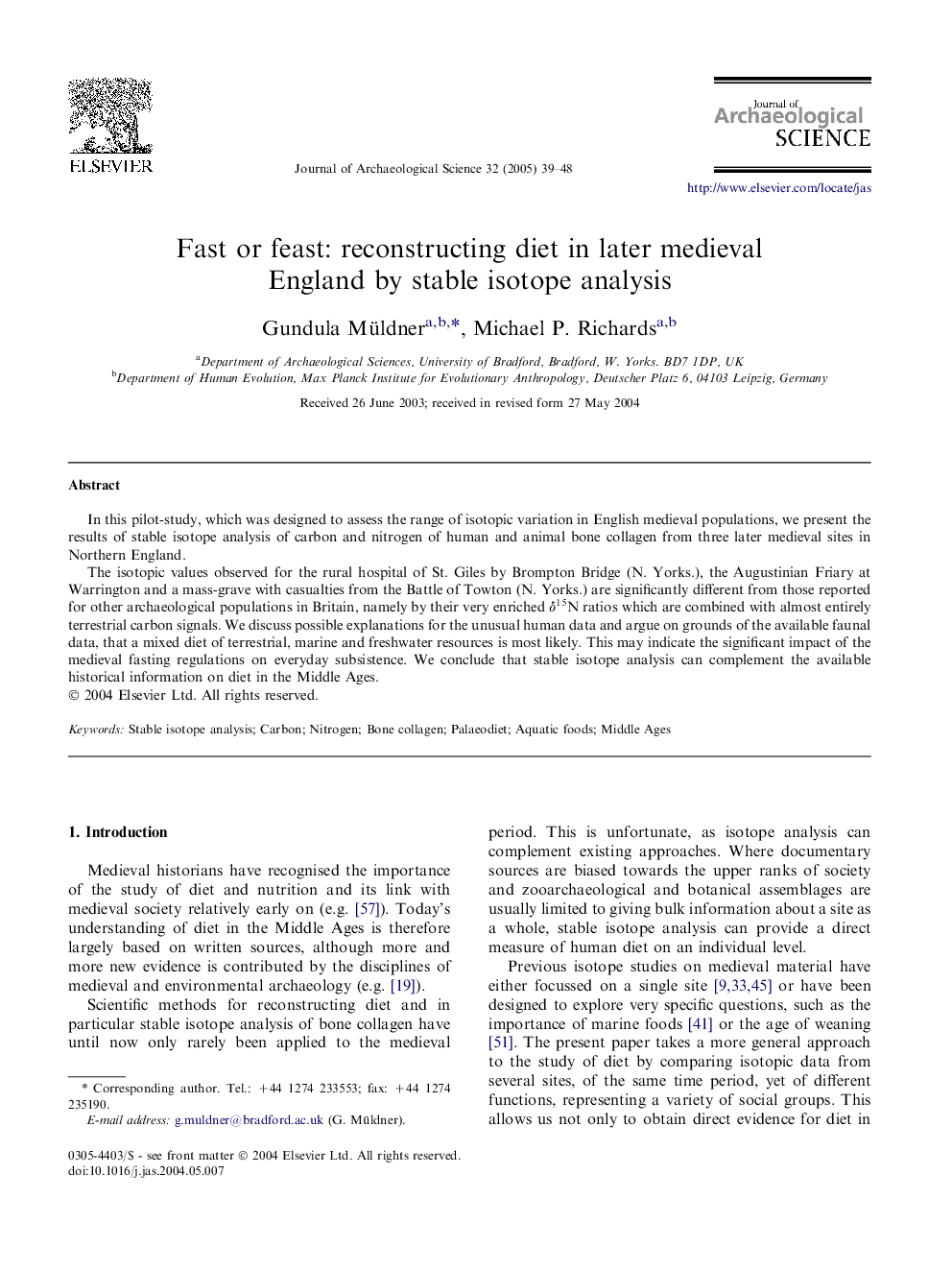| Article ID | Journal | Published Year | Pages | File Type |
|---|---|---|---|---|
| 10499500 | Journal of Archaeological Science | 2005 | 10 Pages |
Abstract
The isotopic values observed for the rural hospital of St. Giles by Brompton Bridge (N. Yorks.), the Augustinian Friary at Warrington and a mass-grave with casualties from the Battle of Towton (N. Yorks.) are significantly different from those reported for other archaeological populations in Britain, namely by their very enriched δ15N ratios which are combined with almost entirely terrestrial carbon signals. We discuss possible explanations for the unusual human data and argue on grounds of the available faunal data, that a mixed diet of terrestrial, marine and freshwater resources is most likely. This may indicate the significant impact of the medieval fasting regulations on everyday subsistence. We conclude that stable isotope analysis can complement the available historical information on diet in the Middle Ages.
Related Topics
Physical Sciences and Engineering
Materials Science
Materials Science (General)
Authors
Gundula Müldner, Michael P. Richards,
